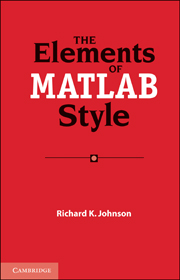Summary
Style: 1b. the shadow-producing pin of a sundial.
2c. the custom or plan followed in spelling,
capitalization, punctuation, and typographic
arrangement and display.
– Webster's New Collegiate DictionaryThe syntax of a programming language tells you what code it is possible to write – what machines will understand. Style tells you what you ought to write – what humans reading the code will understand. Code written with a consistent, readable style is robust, maintainable, and contains fewer bugs. Code written with no regard to style contains more bugs, and it may simply be thrown away and replaced rather than supported and extended.
Attending to style is particularly important when developing software as a team. Consistent style facilitates communication because it enables team members to read and understand each other's work more easily. The value of consistent programming style increases dramatically with the number of people working with the code and with the amount of code in the project.
Two style guides are classics: Strunk and White's The Elements of Style and Kernighan and Plauger's The Elements of Programming Style. These small books work because they are simple: a list of rules, each containing an explanation and examples of correct, and sometimes incorrect, use. This book follows the same pattern.
Some of the advice in this book may seem obvious to you, particularly if you have been writing and reading code for a long time. You may disagree with some of the specific suggestions about formatting, naming, or usage.
- Type
- Chapter
- Information
- The Elements of MATLAB Style , pp. 1 - 3Publisher: Cambridge University PressPrint publication year: 2010

